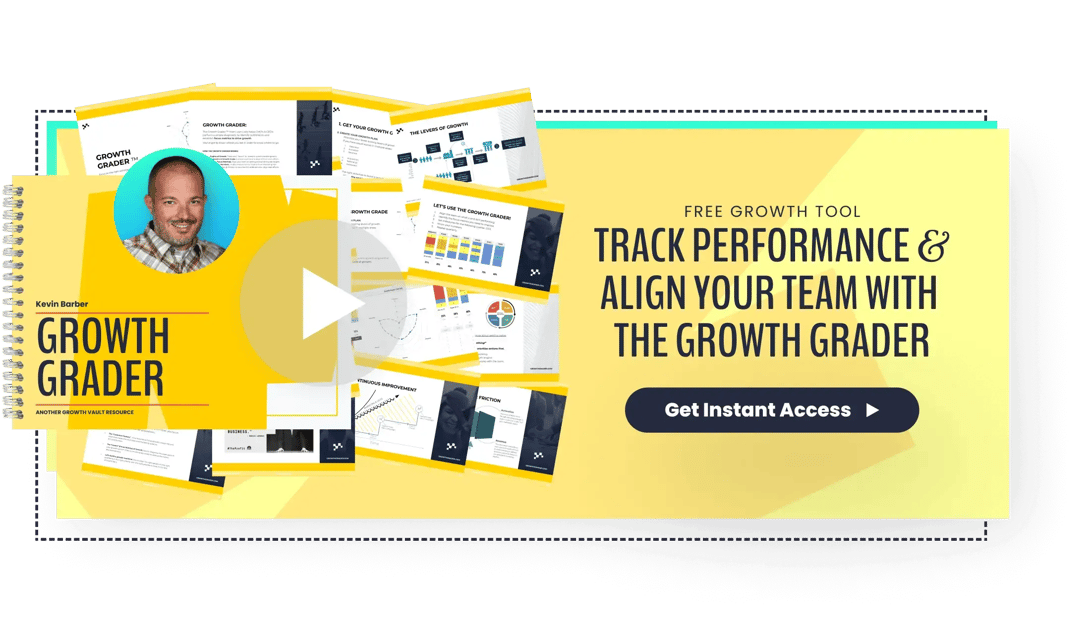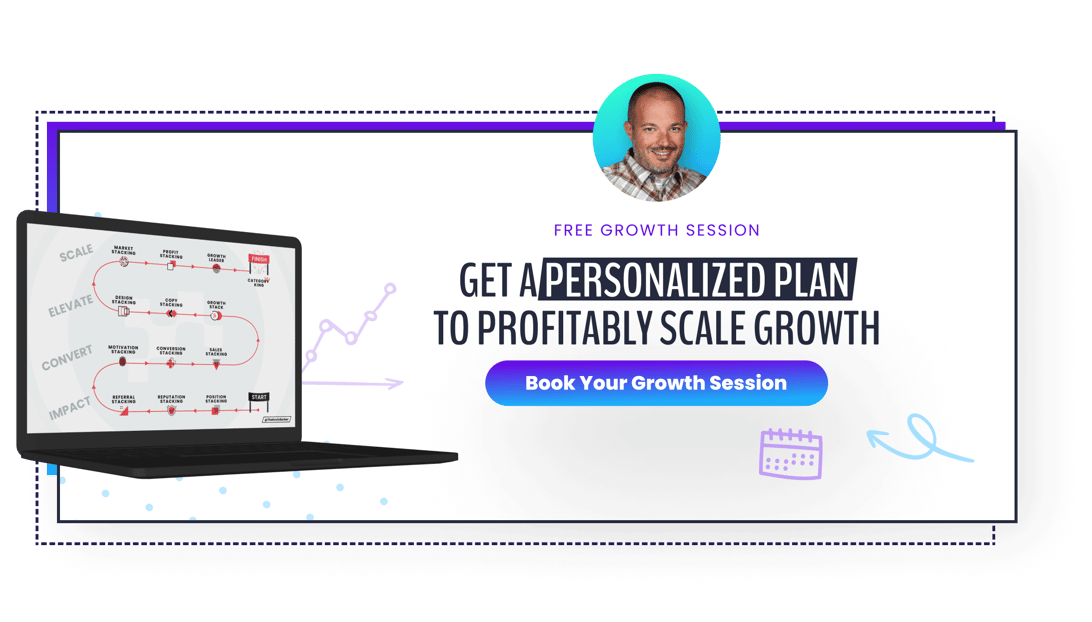-
The Benefits of Agile Marketing
-
How Does Agile Marketing Work?
-
How Can You Implement Agile Marketing?
-
What are the Best Practices for Agile Marketing Teams?
-
What are the Potential Stumbling Blocks of an Agile Marketing Approach?
-
Scaling Agile Marketing
-
Agile Marketing: Is it Right for Your Business?

What is Agile Marketing & How Can You Leverage it Effectively
Have you tried everything but don’t see a return on investment for your marketing efforts?
It’s hard enough to get buy-in from leaders. But if your marketing doesn’t produce measurable results? It’s near impossible. The constant changes in consumer behavior and technology have made driving results and ROI more challenging than ever.
But to scale and grow, businesses must have marketing that pays for itself.
So imagine a world where your marketing strategy is as flexible and adaptive as the fast-paced business environment. A world where your team can quickly pivot, test new ideas, and capitalize on opportunities as they arise.
This is the world of agile marketing.
By adopting an agile approach, businesses can stay ahead of the curve and achieve sustainable growth.
At Lean Labs, we’ve helped B2B SaaS startups profitably acquire customers and scale their businesses using agile marketing strategies.
We’ve been adamant advocates of an agile, lean approach to marketing since our inception over a decade ago… we even put the word “lean” in our brand name!
But don’t just take our word for it.
In this article, we’ll explain precisely what agile marketing is, why it’s beneficial, and how you can implement it in your business. Plus, we’ll share real-life examples of companies that have seen success with agile marketing.
Why does an agile strategy work so well for SaaS startups and B2B companies? Because it emphasizes flexibility, experimentation, and constant iteration. You can adapt when the market throws a curveball. You can better serve your ideal customer by switching lanes.
And with longer sales cycles, the ability to pivot and test new approaches is critical. Wouldn’t you rather use resources efficiently and test new ideas before committing vast sums of money to a project that might fail?
That’s what companies like Basecamp, Trello, Mailchimp, and, yes, Lean Labs do. Trello, for example, regularly conducts A/B testing on various aspects of its website and campaigns and uses the data collected to improve its messaging and targeting.
Is agile marketing actually different from traditional marketing? Or is it just another buzzword? Traditional marketing often follows a more rigid and linear approach to planning and execution. It tends to focus on long-term goals and strategies and may be less open to change and experimentation.
In that sense, agile marketing is not just a buzzword. It helps you be more responsive to customer needs and better use data and technology to improve your marketing efforts.
The Benefits of Agile Marketing
There are so many! Especially for SaaS and B2B companies. We reap the benefits in every campaign we run. Here are some highlights.
Faster Time to Market
Don’t confuse this with rushing to market. But releasing an MVP (minimum viable product) to market helps you gather immediate feedback and adjust. You’ll know what’s working or if you’re missing the mark, and customers will thank you for putting them first.
Increased Collaboration and Communication
Agile teams work together to avoid silos. It’s common to see marketing, product development, and customer service teams working towards a common goal: To provide the best product and service they can.
Agile teams often meet face-to-face or ‘huddle.’ At Lean Labs, we regularly meet to align on projects and ensure we’re making progress. We peer review each others’ work and rely on data and client feedback to ensure we’re doing great work.
This also leads to increased team productivity by providing clear direction and promoting a culture of continuous improvement.
Greater Flexibility and Adaptability
One reason for running tests and leaning on data is to pivot when we need to or double down on what’s working. When something works for one client, it might work for another. If it doesn’t, we’re quick to adapt.
You can’t be afraid to break things. Learn from it, and do great work by switching lanes. People often confuse this with ‘growth hacking,’ but agile marketing isn’t the same.
Where growth hacking points towards quick hacks, tactics, and shortcuts, agile marketing involves developing a robust strategy but being flexible within that strategy.
Improved Customer Focus
Because we’re flexible and focus on one metric, revenue growth, we can deliver what our clients need. They know they’re working with us to achieve one goal, 10X growth.
You can make your team indispensable when you better understand and meet your customer needs.
Even better is when you’ve mapped out the buyer journey. You can test different campaigns and strategies, landing pages, and messaging to see what’s working.
You want to understand the behaviors and preferences of your audience to tailor your campaigns.
This customer-centric approach is at the heart of agile marketing.
Enhanced Ability to Measure and Track Results
To see ROI, you’ve got to set KPIs and clear goals for each campaign. For example, we set campaign targets at Lean Labs around particular metrics that signal quarter-on-quarter growth.
We can measure success and track results using analytics data (more on that later). With a data-driven approach, we make better decisions about where to push harder or pull back.
How Does Agile Marketing Work?
It depends on the framework you decide to use. You can try different frameworks depending on your team and how you want to work.
Kanban
Kanban is a framework that emphasizes visualization and flow. Teams use Kanban boards to manage the flow of work. They’re particularly well-suited to managing marketing campaigns.
Kanban boards are used to visualize the workflow and progress of different tasks and are updated in real time. The goal of Kanban is to optimize the flow of work and minimize delays.
Kanban is a great tool to help identify bottlenecks and make adjustments accordingly.
Scrum
Scrum is a framework that is used to manage and complete complex projects. It emphasizes teamwork, accountability, and iterative progress.
In Scrum, teams work in short campaigns called sprints, during which they plan, execute, and review their work. Sprints are typically two to four weeks long, and at the end of each sprint, the team reviews their progress and plans for the next sprint.
Scrum is an excellent tool for managing complex projects and ensuring everyone works towards the same goals.
Hybrid
A hybrid approach combines elements of both Kanban and Scrum. It allows teams to use the best practices from both frameworks and create a customized approach that works best for their company.
This approach can include using Kanban boards to visualize the workflow and progress of different tasks and using Scrum for regular meetings and sprints to plan, execute, and review work.
Sprints
We briefly mentioned sprints, but they deserve a section of their own! In agile marketing, sprints are the vehicle for getting a project from idea to execution.
Cross-functional teams work to complete a specific set of tasks or deliverables.
At Lean Labs, we meet to define the goals and objectives for sprints and determine the best course of action to get a result. We look for potential blockers and ensure we can do great work.
Once we begin our sprint, we work to complete tasks and hand off our work to the next team.
For example, if we’re producing a landing page, we write the copy and create a wireframe, then hand it off to our design team and, finally, the development team.
We do all this in collaboration with the client.
Working in this way ensures we manage complex projects and everyone is working towards the same goals. We use sprints to manage website redesigns, content marketing campaigns, and social media campaigns.
How Can You Implement Agile Marketing?
Implementation starts with building a team and then an agile infrastructure. You’ll need a central location for storing and sharing information, such as a project management tool like Trello, Asana, or ClickUp.
You’ll also need regular meetings and communication channels like Slack.
Your team must be on board with working with agility. They’ll sometimes have to work asynchronously and move from one task to another.
It takes a certain mindset to work this way, especially if they did things differently in previous companies.
A significant part of an agile marketing infrastructure is how your team is set up for success:
- Establish important marketing metrics: Identify the most important metrics you’ll use to measure the success of your marketing efforts, such as website traffic, conversion rates, and customer acquisition costs. Transparency in how success is measured is essential for accountability and buy-in.
- Outline key steps in the agile marketing process: Define the critical steps in the agile marketing process, such as planning, execution, and review, and ensure that everyone on the team understands their role and responsibilities in each step.
- Assign roles and responsibilities: Identify the key roles and responsibilities of team members, such as product owner, scrum master, and development team, and ensure that everyone understands their role and how they contribute to the overall success of each project and the team.
- Leverage the 6 Levers of Growth: At Lean Labs, we work to improve every growth lever, including Acquisition, Activation, Retention, Referral, Revenue, and Referral. This is crucial for us to track and measure ROI across the customer lifecycle and use data to inform marketing decisions.
- Continuously improve: Regularly review the progress of your marketing efforts and make adjustments to improve performance when necessary. At Lean Labs, we encourage team members to share feedback and ideas for improvement and implement new processes and tools as required.
What are the Best Practices for Agile Marketing Teams?
To make agile marketing work, you must consider how you want to run projects and play to your team’s strengths. Implementing agile marketing strategies is difficult if there are weak links in the chain.
Collaboration and Communication
Product, marketing, sales, design, and development teams are separate in traditional setups. Work is done and passed to the next department without collaboration. For example, marketing passes leads to sales and gets right back to driving awareness.
In agile marketing teams, you must embrace cross-functional collaboration. With team members working together, you get different perspectives and skills brought to the table, leading to innovative and effective solutions.
Communication starts from the top down. In an agile organization, CEOs are in the trenches with the team. Sure, they have oversight and are responsible for the big picture.
But they also establish a regular meeting cadence and actively keep everyone moving in the same direction.
Prioritization and Time Management
As well as working in sprints, agile teams manage their workflows effectively. For example, you don’t want too many projects in progress at once.
You also don’t want to give a blank slate for how long tasks should take. Beware of Parkinson’s Law, which states that work will expand to fill the time allotted for its completion.
Instead, set reasonable task estimates and adapt over time. Efficiency is the aim. When you give yourself a framework to complete a task, you’ll focus in and get things done.
Experimentation and Data-Driven Decision-Making
Experimenting with assets like landing pages, marketing emails, and websites can feel scary. What if you break something? You might break something. But it will be fixable.
The point is you’re getting something live as quickly as possible.
Build a team open to change, experimentation, and continuous improvement.
That’s not to say you should put out subpar work. Everything you launch should pass through quality control and align with your customer’s problems and goals.
But without putting something live, you can’t test it!
You won’t know if it resonates or if you need to pivot. That’s why analyzing results and asking for continuous feedback are central to agile marketing best practices.
Speaking of feedback, ensure you give and receive feedback gracefully. Sometimes you get constructive feedback; other times, you can take it with a pinch of salt.
What are the Potential Stumbling Blocks of an Agile Marketing Approach?
Agile marketing requires a specific mindset and culture within your business. Some people don’t want to hustle. Or work quickly. Or be constrained by time estimates.
You might get some kickback if you’re trying to change your company’s culture. “But this is how we’ve always done it!”
There might be a lack of understanding. How does it differ from traditional marketing? Is it growth hacking? Isn’t it a short-term play? What if we launch a campaign that doesn’t work? Changing minds will take some time.
Then there are the tools you need. You must find a way to bring everything together, from project management software to collaboration tools and how you manage, organize, and distribute content.
And what about learning curves? Design tools like Figma aren’t just another investment; they also take time to master. You need robust processes and a foolproof onboarding process for new team members.
The Power of Agile Marketing Tools
You can overcome many of the stumbling blocks above by using tools that help cross-functional teams implement agile strategies well.
HubSpot offers a wide range of tools that can be integrated seamlessly, including marketing automation, CRM, and analytics. They have free CMS tools to empower small businesses, and you can upgrade to the full CMS Hub as you scale.
You’ll have a centralized location for all marketing activities, making it easy to track and measure progress against goals and objectives, tools and features that support testing and experimentation, such as A/B testing.
It’s user-friendly and offers a wide range of resources, including a knowledge base, blog, and community forum, which can help teams stay up-to-date with the latest trends and best practices in agile marketing.
ClickUp is a project management tool that helps your team manage their work more efficiently. You can create detailed tasks and subtasks for different team members, and collaboration is easy with comments, mentions, and real-time notifications.
It’s customizable and integrated with tools like Slack, Trello, and Google Calendar.
Google gets an honorable mention here. Google has everything you need to work cross-functionally, from housing all your content to creating presentations, pitch decks, and spreadsheets. You can also add Google Analytics, Search Console, and Tag Manager.
Scaling Agile Marketing
We’ve given you A LOT to think about so far. But is there a simple way to get started? Do you need all of these complex tools? The short answer is no.
For example, if you’re starting out, the worst thing you can do is try to scale too quickly. You shouldn’t go to market without a solid strategy and dive straight into agile marketing without having your organization set up for success.
One route you can take is hiring an outsourced growth team. Outsourced teams already work together and will leverage proven systems and processes to deliver results.
- Expertise: Outsourced growth teams typically have a wealth of experience and knowledge in implementing agile marketing processes and systems.
- Cost-effective: You won’t need to invest in hiring, training, and managing an in-house team.
- Scalability: Outsourced growth teams often work with different budgets and can scale up or down as needed.
- Objectivity: They’ll bring a fresh perspective, find gaps and opportunities, and help position your organization, getting your product in front of your ideal audience.
The beauty of an outsourced growth team is that once agile marketing processes, cadences, and systems are working well and you start seeing results, you can slowly add team members in-house and have a proven framework to work from.
Agile Marketing: Is it Right for Your Business?
Agile marketing works when you have buy-in from your team, they’re open to change, and you have a clear vision and understanding of what agile marketing is. It’s not just a buzzword.
Is agile marketing right for your business? If you have ambitious goals, operate in highly-competitive markets, and want to develop new products, yes. If you prefer a small, cross-functional team and value collaboration and communication, definitely.
Growth is the most important metric we look to move the needle at Lean Labs. In fact, we work with our clients to achieve 10X growth in specified periods. Our drive for creating growth means we lean into agile methodologies to produce results. And it works.
Want to know how? Want to peek behind the curtain and see the exact plays we use to drive massive growth?
Then unlock the Growth Playbook.






